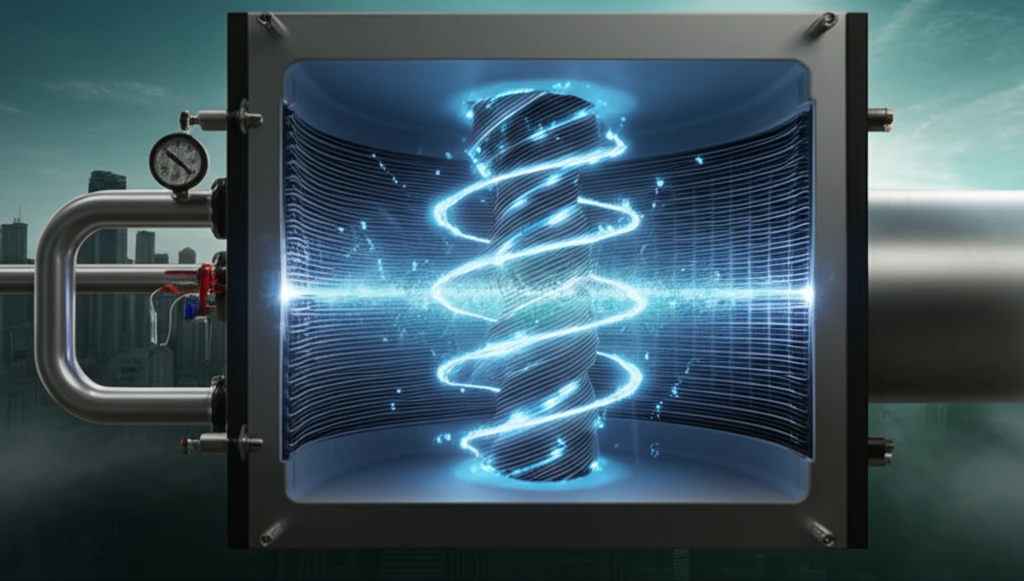
Supercharge Your Home Heating: The Surprising Power of Nanofluids
"Could titanium oxide nanofluids be the key to more efficient and effective heat exchangers?"
Imagine a world where your home heating system is not only more effective but also significantly more energy-efficient. This isn't just a futuristic dream; it's a potential reality being explored through innovative research into nanofluids and heat exchanger technology. As energy costs rise and environmental concerns grow, the need for advanced heating solutions becomes ever more critical.
Heat exchangers, vital components in many systems, play a crucial role in everything from internal combustion engines to air conditioning. For years, scientists and engineers have sought ways to improve their performance. One promising avenue involves the use of nanofluids – fluids engineered with nanoparticles to enhance their thermal properties. Nanofluids have the potential to revolutionize how heat is transferred, offering a pathway to greater efficiency and reduced energy consumption.
Recent studies have focused on the use of titanium oxide nanofluids in conjunction with specialized conical strip inserts within heat exchangers. This combination aims to maximize heat transfer while minimizing energy losses. Let's explore the science behind this technology, its potential benefits, and what it could mean for the future of home heating.
Unlocking the Potential of Nanofluids in Heat Exchangers

Traditional heat exchangers often face limitations in their ability to efficiently transfer heat. This is where nanofluids come into play. By suspending nanoparticles, such as titanium oxide, in a base fluid like water, the resulting nanofluid exhibits enhanced thermal conductivity. This means it can absorb and dissipate heat more effectively than the base fluid alone. The increased surface area provided by the nanoparticles facilitates greater heat transfer at a microscopic level.
- Increased Efficiency: Nanofluids can significantly boost the efficiency of heat exchangers compared to traditional fluids.
- Enhanced Heat Transfer: Conical strip inserts promote turbulence and mixing, further improving heat transfer rates.
- Energy Savings: More efficient heat transfer leads to reduced energy consumption and lower heating costs.
- Reduced Environmental Impact: Lower energy consumption translates to a smaller carbon footprint.
The Future of Heating is Here
The research into titanium oxide nanofluids and conical strip inserts holds immense promise for the future of heating technology. By combining these innovations, we can create heating systems that are not only more efficient but also more sustainable. As the world continues to seek ways to reduce energy consumption and combat climate change, advancements in heat transfer technology will play a vital role. The journey toward a greener, more energy-efficient future begins with exploring and implementing innovative solutions like nanofluids.
